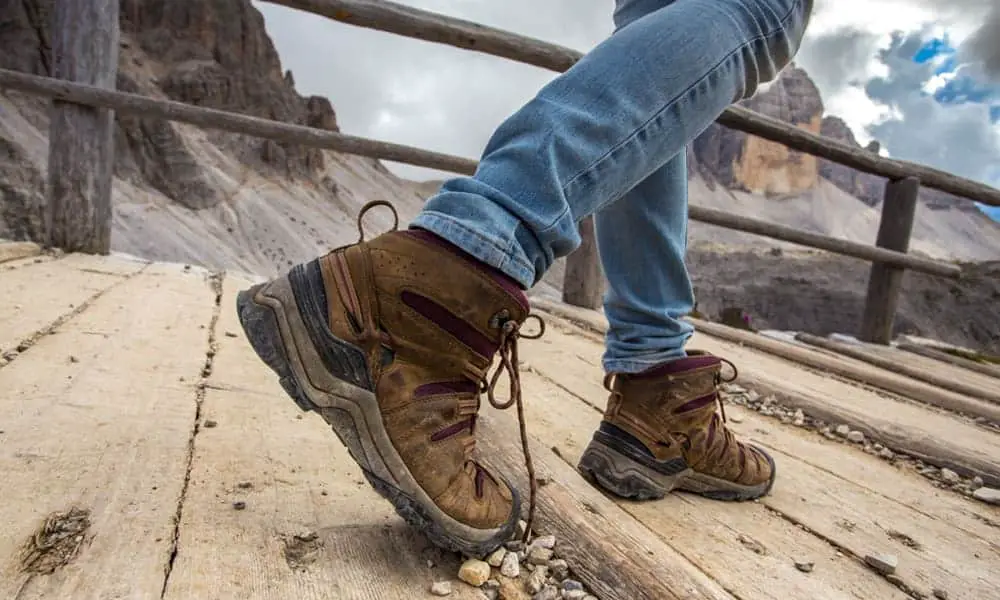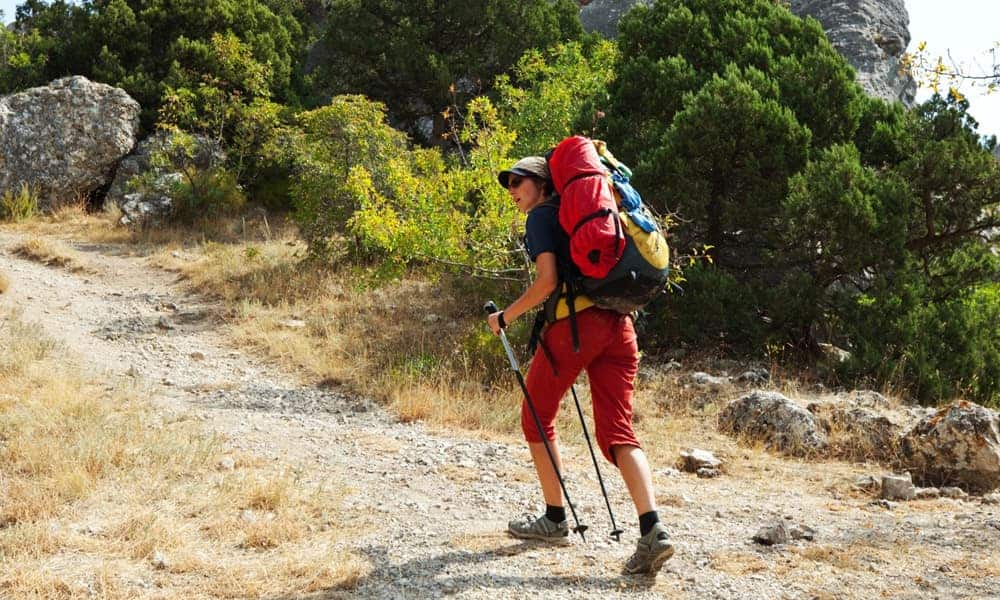Hiking Boots – Rigid and Strong
There’s one question often asked by the owners of a new pair of hiking boots – will my boots stretch?
A hiking shoe is notoriously rigid and tight. This rigid construction might lead many owners to question whether the boots will actually stretch over time, creating more flexibility and comfort for the wearer.
Therefore, many people who ask whether hiking boots will stretch are really wondering whether their boots will become more comfortable. We’ll provide you a full resource for addressing this question. Here, we’ll examine how much these boots will stretch, how to buy a perfectly fitted pair of boots, and several techniques you can utilize to stretch these boots yourself.
Do Hiking Boots Stretch?
Yes, but not much. Hiking boots do change their shape somewhat over time as they break in. However, because of their strong, durable construction, the difference might not be overly noticeable.
The boots will adjust their shape as they adapt to terrain and to your foot. The walls of the boot will be naturally pressed out by your foot, and the footbed will compress somewhat from your weight. That being said, it likely won’t be anything too significant.
Find out 🥾 Are Timberlands Good for Hiking?
But this isn’t the full story, because it will also depend on the type of boots you buy. For example, leather stretches more than synthetic materials. Therefore, you can expect a more traditional, rugged leather hiking boot to stretchmore, even though that seems counterintuitive.
Either way, you shouldn’t rely on this stretching to make your boots comfortable. Don’t buy a tight-fitting pair of boots expecting it will become comfortable with use. The best thing you can do is buy a pair of boots that fit you properly. Here’s how to do just this:
Check for Fit

As mentioned above, you shouldn’t rely on your boots to stretch to make them more comfortable. They may never stretch enough to eliminate this discomfort. Therefore, your best bet is to buy properly fitted boots from the outset.
For example, hiking boots are meant to fit snugly. A snug pair of hiking boots will provide adequate support to different areas of your feet, allowing you to remain comfortable on long hikes. The boots should fit snugly around the ankle, with enough room for the user to wiggle their toes. Hiking boots aren’t meant to fit like normal shoes. They require this snugness to perform properly. Here’show to measure each dimension to achieve this perfect fit:
The Length: The length of a boot is perhaps the most important measurement. If a boot is too long or not long enough, it will always be uncomfortable to wear.
You should always test the length of a boot with your longerfoot. Wear the same type of socks you would wear while hiking and lace up the boot snugly. At this point, you want to stand up, walk around, and see how the boot feels.
For a final test, lean forward and see if you can fit a finger between your heel and the back of the boot. Ideally, there should be enough room for one index finger, which means you will have enough room at the front of the boot to wiggle your toes.
The Width: The width of a boot iseasier to check, since it’s mostly about feel. Your feetshouldn’tbe crunched from side to side, and you also shouldn’t be able to move your feet in that direction. If the boot feels snug but not too snug, then the width is good. Plus, the boot will stretch slightly at either side with prolonged use, so it will generally become more comfortable over time.
The Heel: Finally, you need to ensure that the boots are snug around the ankle. When laced, the boot should properly hold your foot in place at the bottom of the boot. In other words, your foot shouldn’t be lifting off the insole as you walk. This support is crucial so that you aren’t exerting extra energy with each step. It provides you the support needed for long hikes and treks.
How to Stretch Out Hiking Boots

Even for those who find the perfect pair of boots, you still might be interested in achieving that stretch. A properly fitted pair of boots will be quite snug; however, breaking them in might help make the fit more comfortable.
Here’s our recommended method:
Breaking in Your Boots Properly
The best way to break in new hiking boots is slow and steady. You want to spread the process out over a few days to minimize excess pressure on your feet. Here’s a good way of doing it:
Step 1 – Some Light Walking: Walk around the house, walk the dog, or walk around the block. You want to start with a nice, gentle walk just to get a feel for your new boots. This will gently start the break-in process.
Step 2 – Intermediate Hike: Next, take your boots on an “easy” hike. Aim for about two or three miles across relatively flat terrain. This will begin to break in your boots over uneven terrain, which is important because it allows the shoes to bend and flex in different angles.
Step 3 – Normal Use: Once you feel comfortable during an intermediate hike, it’s time to jump right in. Take your new boots and use them as you initially intended. Try some rougher terrain and allow your boots to tackle various obstacles. The more you use them, the more they will stretch and become more comfortable.
Other Methods for Stretching Your Boots
If you’re really in a pinch, there areother methods you can take to stretch out your boots. We’d only recommend these methods if you are out of options. Generally, as long as you purchase properly fitted boots and break them in gradually, you’ll be fine.
That being said, here are some other options to consider:
Buy a shoe stretcher: Put this tool in your boots and leave it overnight. We think it’s more effective to stretch them through regular use, but a boot stretcher is available as an alternative.
Heat the Boot: Certain synthetic walking boots will actually “loosen” with heat. The heat allows the fabric to stretch more readily. For this method, simply use a hairdryer until the boots are warm to the touch, and then wear them to walk around. As you can see, there are alternatives available, but we don’t think there’s a better option than breaking in the boots yourself. While hiking boots aren’t necessarily known for their ability to stretch, this won’t be an issue if you follow the proper procedures.







